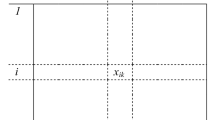Abstract
Cobalt (III) is present in most of the minerals in the Congolese Copperbelt deposits. Its hydrometallurgical treatment requires to be reduced to Co2+, using a reducing agent. Using the Principal Component Analysis (PCA) approach, a 16 × 7 matrix was built to identify groups of ores/reducers with similar metallurgical performance. The study was based on the optimum values of reducing agents for the four selected minerals: 1.34, 0.33, 1.51, 0.25 g for Fe2+; 0.63, 0.51, 0.47, 0.24 g for Na2S2O5; 0.37, 0.11, 0.34, 0.21 g for Fe; and 2.02, 0.07, 0.13, 0.16 g for Cu. These optima crossed with other variables retained, in particular, the Cu and Co yields, reducing agent consumption, Cu and Co solubilization, and redox potential at leaching completion were reduced to two main components F1 (41.38%) and F2 (31, 46%). It emerges from the application of Principal Component Analysis to the 16 × 7 matrix a correlation circle showing that the variables having a major influence on the solubilization of Co are the reducing agent consumption by Co (24.48%), the amount of reducing agent (20.14%), and the potential at reaction completion (18.61%). Homogeneous groups of ores/reducers with good performance quality (F1 + F2 = 72.84%) were identified. In all and from a performance perspective, the ores treated with Fe2+, Fe, and Cu gave satisfactory metallurgical results (> 95% yield). On the contrary, the use of Na2S2O5 on all the deposits gave lower results (between 90% and 95% Co).
Graphical Abstract









Similar content being viewed by others
References
Nkulu G, Gaydardzhiev S, Mwema E (2013) Statistical analysis of bioleaching copper, cobalt and nickel from polymetalicconcentrate originating from Kamoya deposit in the Democratic Republic of Congo. Miner Eng. https://doi.org/10.1016/j.mineng.2012.10.007
Zeka L, Lambert F, Frenay J, Gaydardzhiev S, IlungaNdala A (2015) Possibilities for Co(III) dissolution from an oxidized ore through simultaneous bioleaching of pyrite. Miner Eng. https://doi.org/10.1016/j.mineng.2014.12.023
Kime MB, Kanowa EK, Mulaba-Bafubiandi AF, Diyambi SN (2016) Value recovery from mukondo mine low-grade cobalt ore by heap leaching and solvent extraction. In: Hydrometallurgy conference 2016: sustainable hydrometallurgical extraction of metals
Ntakamutshi PT, Kime MB, Mwema EM, Ngenda RN, Kaniki AT (2017) Agitation and column leaching studies of oxidised copper–cobalt ores under reducing conditions. Miner Eng. https://doi.org/10.1016/j.mineng.2017.06.001
Mbuya BI, Kime MB, Tshimombo AMD (2017) Comparative study of approaches based on the Taguchi and ANOVA for optimizing the leaching of copper–cobalt flotation tailings. Chem Eng Commun 204:512–521. https://doi.org/10.1080/00986445.2017.1278588
USGS (2014) Mineral Commodity Summaries 2014, US Geological Survey Open-File Report 2014–1091, p. 243
Hitzman M, Kirkham R, Broughton D, Thorson J, Selley D (2005) The sediment-hosted stratiform copper ore system, economic geology: one hundredth anniversary volume, 1905–2005. Society of economic geologists, Littleton, pp 609–642
Selley D, Broughton D et al (2005) A new look at the geology of the Zambian Copperbelt. Economic geology: one hundredth anniversary vol., 1905–2005. Society of economic geologists, Littleton, pp 965–1000
Cailteux J, Kampunz AB, Lerouge C, Kaputo AK, Milesi JP (2005) Genesis of sediment-hosted stratiform copper-cobalt deposits, central African copperbelt. J Afr Earth Sci 42:138–154
Fai I, Barton MD (2011) Alteration and ore distribution in the proterozoic mines series, Tenke-Fungurume Cu–Co district Democratic Republic of Congo. Miner Depos 47(2011):501–519
Mbuya BI, Ntakamutshi PT, Muhungu ST, Kawama FN, Kasongo GK, Nkulu GN (2019) (in french) Lixiviation simultanée du cuivre et Cobalt dans le systeme CuFeS2-Fe3O4-Co2O3 régie par la boucle Fe2+/Fe3+. Congosciences 7(2):70–80
Kime MB, Makgoale D (2016) Characterization of copper–cobalt ores and quantification of Cu2+, Co2+, Co3+, and Fe3+ in aqueous leachates using UV–visible spectrophotometry. Chem Eng Commun 203(12):1648–1655. https://doi.org/10.1080/00986445.2016.1230102
Tshipeng SY, Kaniki AT, Kime MB (2017) Effects of the addition points of reducing agents on the extraction of copper and cobalt from oxidized copper–cobalt ores. J Sustain Metall. https://doi.org/10.1007/s40831-017-0149-x
Shengo ML, Kime MB, Mambwe MP, Nyembo TK (2020) A review of the beneficiation of copper–cobalt-bearing minerals in the Democratic Republic of Congo. J Sustain Min 18(2019):226–246. https://doi.org/10.1016/j.jsm.2019.08.001
Crundwel FK, Preez NB, Knights BDH (2020) Production of cobalt from copper–cobalt ores on the African Copperbelt—an overview. Miner Eng. https://doi.org/10.1016/j.mineng.2020.106450
Saporta G, Niang N (2003) Analyse en composantes principales. Gérard Govaert. Analyse des données, Hermes, pp.19–42, 978–2–7462–0643–4. hal-02507732
Jolliffe IT (2010) Principal component analysis. Springer, New York
Bartolacci G, Bouajila A (2000) Application of multivariate tools to mineral processing data analysis and modellng: flotation case. In: IFAC future trends in automation in mineral and metal processing, Finland.
Gazley M, Collins KS, Roberston J, Benjamin RH, Fisher LA, McFarlane A (2015) Application of principal component analysis and cluster analysis to mineral exploration and mine geology. In: AusIMM New Zealand branch annual conference 2015, pp. 131–139
Mbuya BI, Kime MB, Ntakamutshi PT, Mwilen RT, Muhungu ST, Mwema EM, Kanda JMT, Kaniki AT (2018) Evaluation of flocculation and settling behavior of leach residues: contribution of principal component analysis. J Sustain Metall. https://doi.org/10.1007/s40831-018-0197-x
Guerrien M (2006) (in french) L’intérêt de l’analyse en composantes principales (ACP) pour la recherche en sciences sociales. Cahiers des Amériques latines, Vol. 43. doi. https://doi.org/10.4000/cal.7364
Abdesselam R (2006) Analyse en composantes principales mixte, Crem UMR CNRS 6211, Université de Caen, Caen.
Sabiha H (2014) (in french) Eléments d’aide à la décision dans l’analyse territoriale—application de l’ACP sur la région Nord-Ouest. Rev ElWahat Rech Etudes 7(2):118–134
Yamamoto H (2017) The principal component analysis of omics data. Nova science publishers Inc, New York (ISBN: 978–1–53610–889–7)
Ferron CJ (2008) Sulfur dioxide: a versatile reagent for the processing of cobaltic oxide minerals. JOM 60(10):50–54. https://doi.org/10.1007/s11837-008-0136-6
Author information
Authors and Affiliations
Corresponding author
Additional information
The contributing editor for this article was Grace Ofori-Sarpong.
Publisher's Note
Springer Nature remains neutral with regard to jurisdictional claims in published maps and institutional affiliations.
Rights and permissions
About this article
Cite this article
Mbuya, B., Ntakamusthi, P., Kime, MB. et al. Metallurgical Evaluation of the Leaching Behavior of Copper–Cobalt-bearing Ores by the Principal Component Analysis Approach: Case Study of the DRC Copperbelt Ore Deposits. J. Sustain. Metall. 7, 985–994 (2021). https://doi.org/10.1007/s40831-021-00389-5
Received:
Accepted:
Published:
Issue Date:
DOI: https://doi.org/10.1007/s40831-021-00389-5




